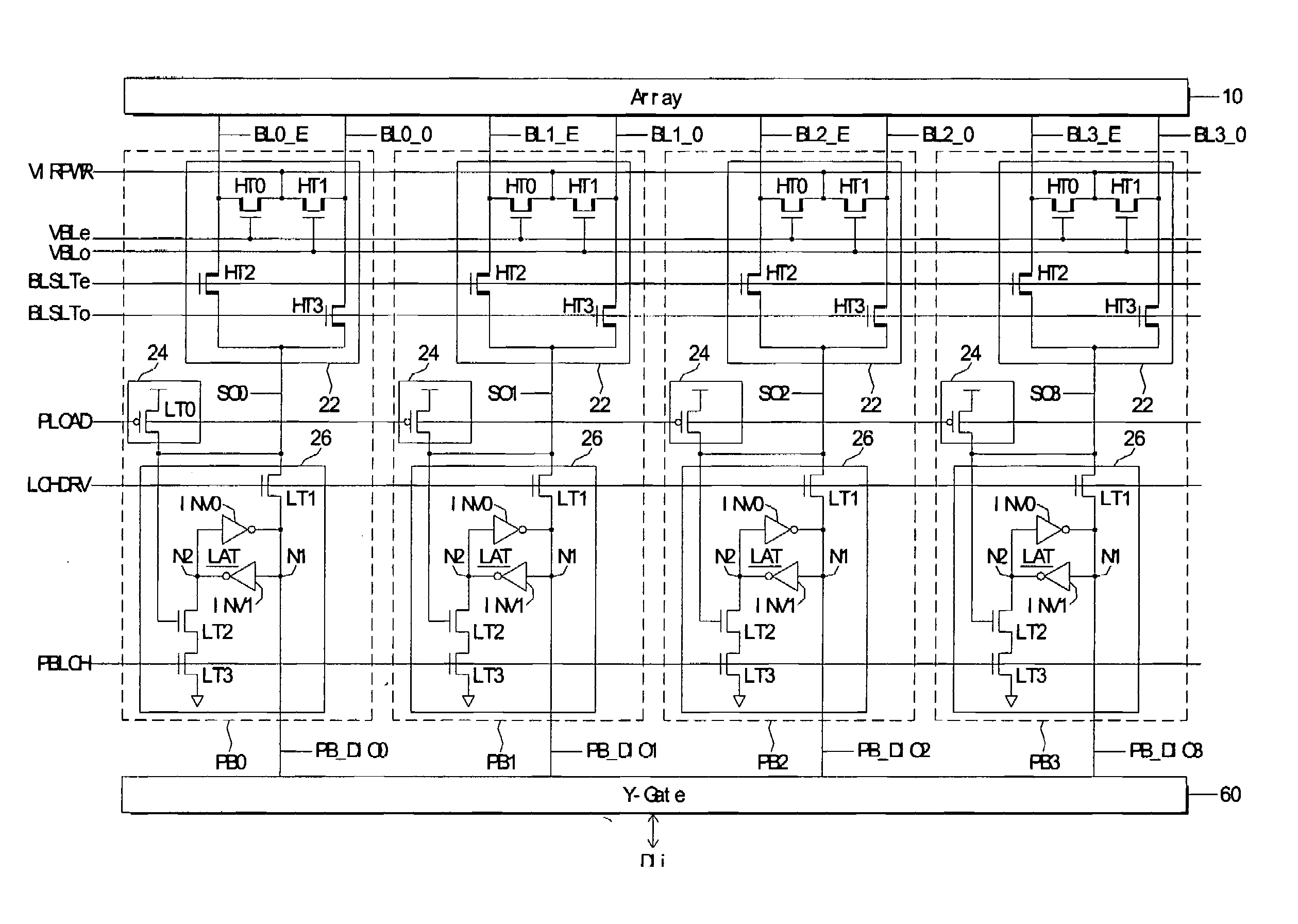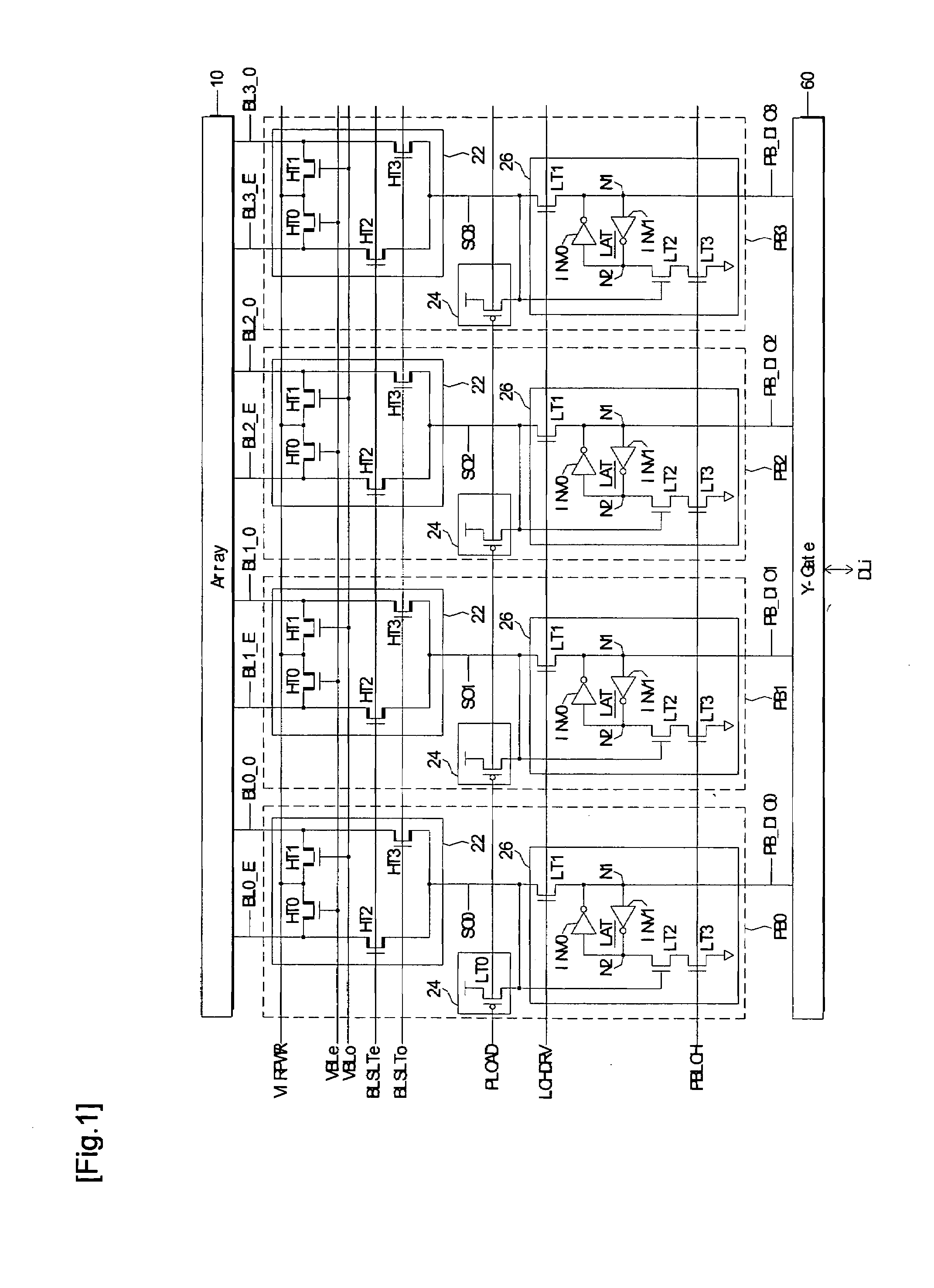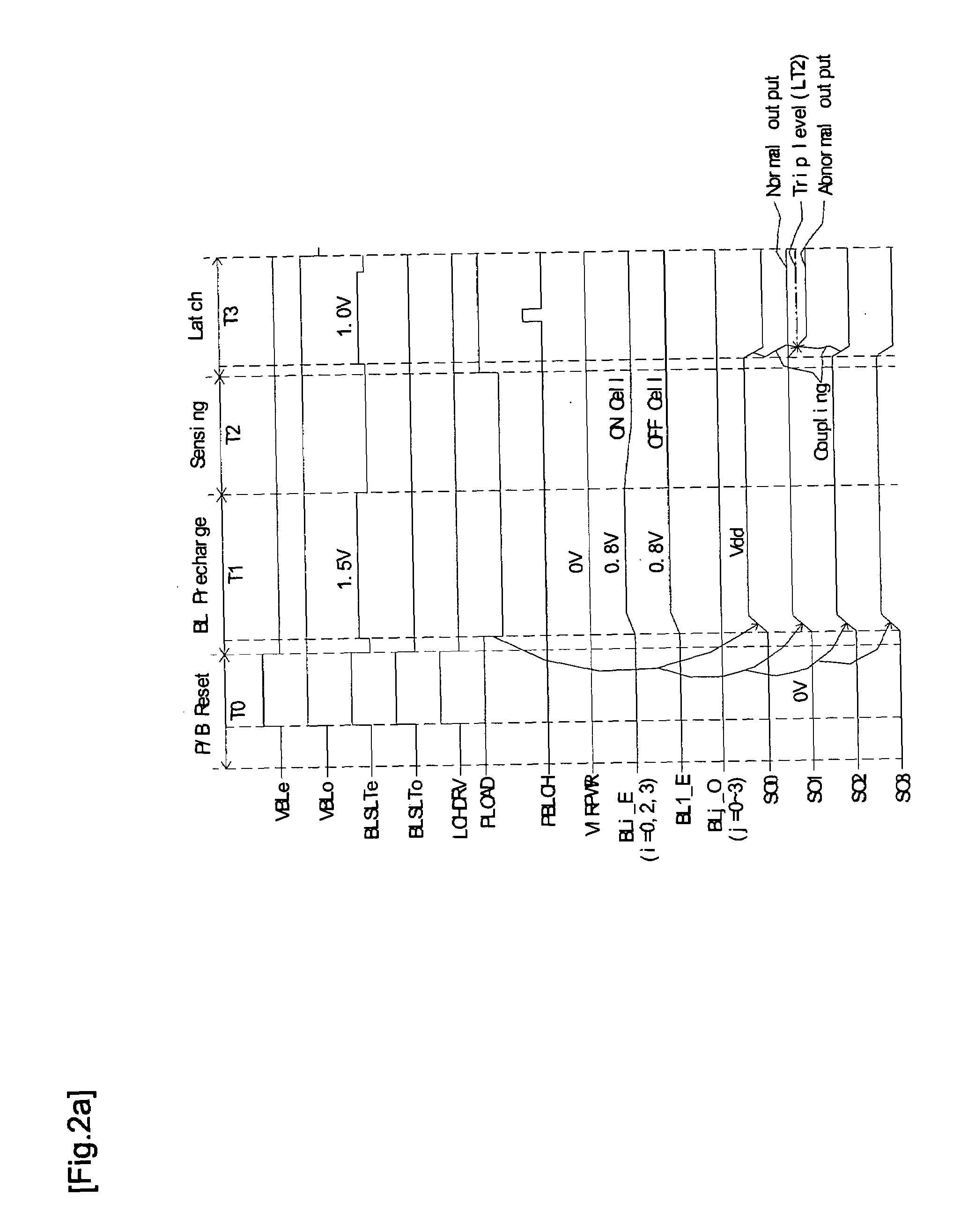Semiconductor device for reducing coupling noise
a semiconductor and coupling noise technology, applied in the field of semiconductor devices, can solve the problems of increased manufacturing cost, read error, and read errors of flash memory, and achieve the effect of reducing or eliminating coupling noise and increasing chip area
- Summary
- Abstract
- Description
- Claims
- Application Information
AI Technical Summary
Benefits of technology
Problems solved by technology
Method used
Image
Examples
Embodiment Construction
[0052]FIG. 3 illustrates a page buffer of a flash memory device according to an example embodiment of the present invention. As shown in FIG. 3, one more of the page buffers PB0, PB1, PB2, and PB3 of the present invention may include a switch transistor LT4. In FIG. 3, constituent elements that are identical to those in FIG. 1 are marked by the same reference numerals, and description thereof is thus omitted.
[0053]The switch transistor LT4 of each of page buffers PB0, PB1, PB2, and PB3 may be a low-voltage transistor, which is formed within a low-voltage region (or a low-voltage circuit region) where a pre-charge circuit 24 and a sense and latch circuit 26 of each page buffer PB0, PB1, PB2, and PB3 are formed. In each page buffer, a drain of the switch transistor LT4 may be electrically connected to a gate of an NMOS transistor LT2 as a sense transistor through a corresponding sense line SOi (i=0–3). A source of the switch transistor LT4 may be electrically connected to NMOS transis...
PUM
 Login to View More
Login to View More Abstract
Description
Claims
Application Information
 Login to View More
Login to View More - R&D
- Intellectual Property
- Life Sciences
- Materials
- Tech Scout
- Unparalleled Data Quality
- Higher Quality Content
- 60% Fewer Hallucinations
Browse by: Latest US Patents, China's latest patents, Technical Efficacy Thesaurus, Application Domain, Technology Topic, Popular Technical Reports.
© 2025 PatSnap. All rights reserved.Legal|Privacy policy|Modern Slavery Act Transparency Statement|Sitemap|About US| Contact US: help@patsnap.com



